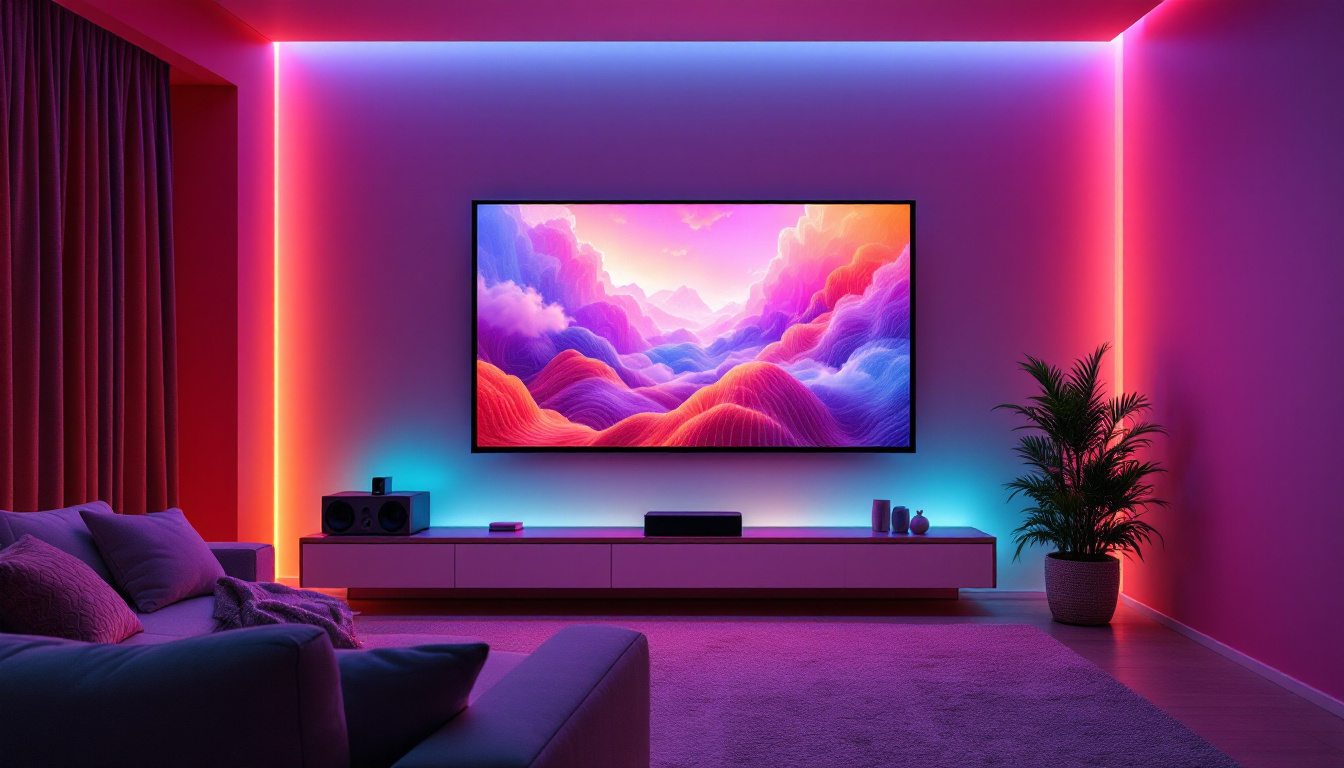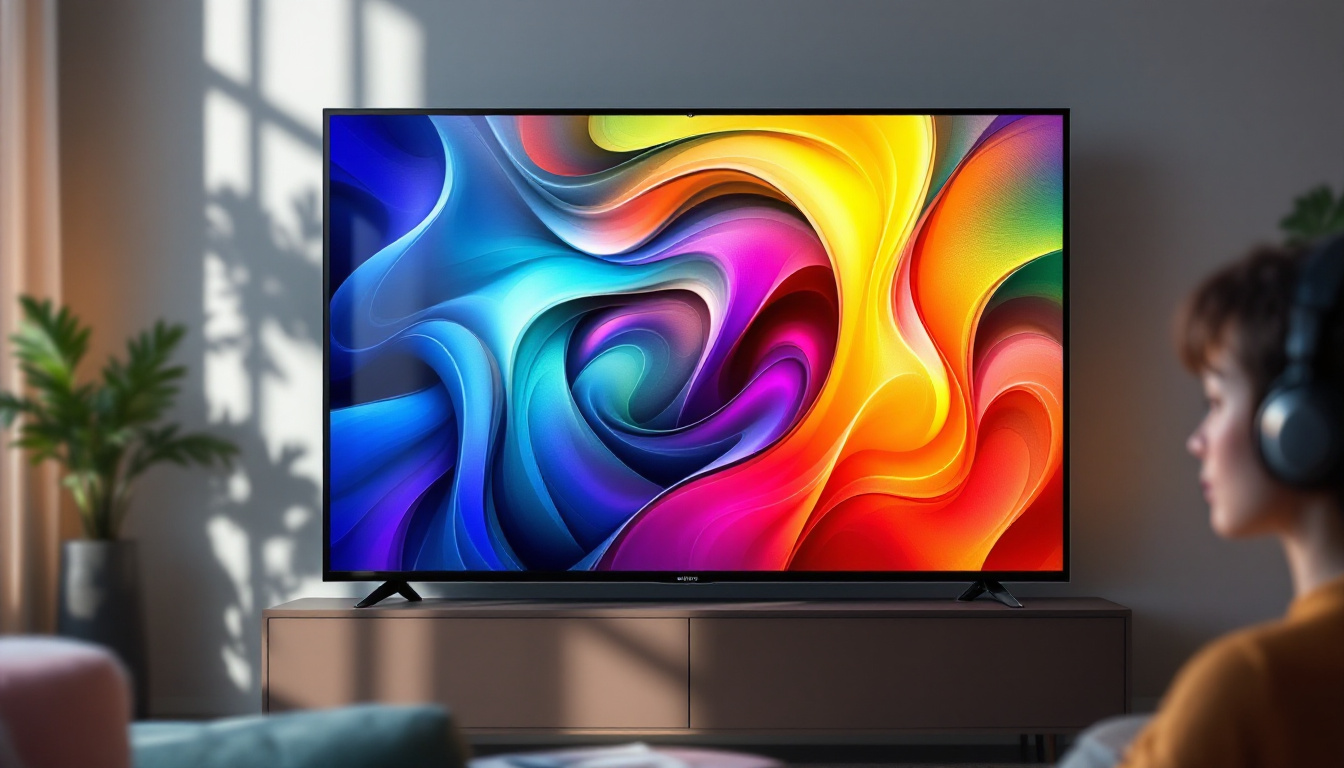In the world of television technology, the terms LCD and LED are often used interchangeably, leading to confusion among consumers. While both technologies share similarities, they also have distinct differences that can significantly impact viewing experience. This article aims to demystify these technologies, focusing on LED displays within the context of LCD televisions.
Understanding LCD Technology
Liquid Crystal Display (LCD) technology has been a staple in the television market for several years. It utilizes liquid crystals sandwiched between two layers of glass or plastic, which manipulate light to create images. The fundamental principle behind LCDs is that these crystals can change their alignment when an electric current is applied, allowing them to control the passage of light.
The Basics of LCD Operation
In an LCD TV, the display itself does not emit light. Instead, it relies on a backlight to illuminate the liquid crystals. This backlight can be provided by various technologies, including fluorescent lamps or LEDs. The quality and type of backlighting play a crucial role in the overall performance of the television.
The liquid crystals in an LCD panel are responsible for modulating the light. By adjusting the alignment of the crystals, the display can produce a range of colors and shades. This modulation is what allows viewers to see images on the screen. The arrangement of these crystals is precisely engineered to ensure that the colors blend seamlessly, providing a rich visual experience. Additionally, advancements in technology have led to the development of various LCD types, such as IPS (In-Plane Switching) and VA (Vertical Alignment), each offering unique benefits in terms of viewing angles and contrast ratios.
Advantages of LCD TVs
LCD televisions have several advantages that have contributed to their popularity. They are generally lightweight and slim, making them easy to mount on walls or fit into tight spaces. Additionally, LCD screens offer good color accuracy and sharp images, especially in well-lit environments.
Another significant advantage is their energy efficiency. Compared to older technologies like CRT (Cathode Ray Tube), LCDs consume less power, making them a more environmentally friendly choice. Furthermore, LCDs are less prone to burn-in, a phenomenon where static images can permanently affect the display quality. This durability makes them particularly suitable for varied viewing habits, whether it’s binge-watching a series or playing video games for extended periods. Moreover, the longevity of LCD screens has improved over the years, with many models boasting lifespans of over 50,000 hours, ensuring that consumers get great value for their investment.
LED Technology: A Closer Look
LED, or Light Emitting Diode, technology is often associated with modern television displays. However, it is essential to clarify that LED TVs are essentially a type of LCD TV that uses LEDs for backlighting. This distinction is crucial for understanding the advantages and features of LED displays. The evolution of LED technology has not only transformed the television market but has also influenced various other applications, from general lighting to automotive headlights, showcasing its versatility and efficiency.
Types of LED Backlighting
There are primarily two types of LED backlighting used in LCD TVs: edge-lit and full-array. Edge-lit LED TVs have LEDs positioned along the edges of the screen, which allows for a slimmer design. However, this setup can sometimes lead to uneven lighting and less impressive contrast ratios. This design is often favored for its sleek aesthetics, making it a popular choice for consumers looking to save space without sacrificing style.
On the other hand, full-array LED TVs feature a grid of LEDs behind the entire screen. This configuration allows for better control over local dimming, resulting in deeper blacks and enhanced contrast. Full-array LED technology typically provides a superior viewing experience, especially in dark scenes. Additionally, advancements in this technology have led to the development of mini-LEDs, which are smaller and can be packed more densely, further improving brightness and contrast capabilities. This innovation is paving the way for even more immersive viewing experiences, as it allows for finer control over light and shadow in every scene.
Benefits of LED Displays
One of the most significant benefits of LED displays is their ability to produce brighter images compared to traditional LCDs with fluorescent backlighting. This increased brightness makes LED TVs particularly effective in well-lit rooms, where reflections and ambient light can affect visibility. Furthermore, the energy efficiency of LED technology means that these displays consume less power, making them an environmentally friendly choice for consumers who are conscious of their carbon footprint.
Moreover, LED technology allows for improved color accuracy and a wider color gamut. This means that viewers can enjoy more vibrant and lifelike colors, enhancing the overall viewing experience. Additionally, LED TVs tend to have faster response times, which can be advantageous for fast-paced content such as sports and action movies. The combination of these features not only elevates the quality of everyday viewing but also makes LED displays ideal for gaming, where quick refresh rates and stunning visuals can significantly enhance the experience. As gaming technology continues to advance, the demand for high-performance displays that can keep up with these developments will only grow, solidifying LED technology’s place at the forefront of display innovation.
Comparing LCD and LED Displays
While LED displays are technically a subset of LCD technology, the differences in backlighting methods lead to varying performance characteristics. Understanding these differences can help consumers make informed decisions when purchasing a television.
Picture Quality
When it comes to picture quality, LED displays generally outperform traditional LCDs with fluorescent backlighting. The ability to achieve higher brightness levels and better contrast ratios makes LED TVs a preferred choice for many consumers. Full-array LED technology, in particular, excels in delivering deep blacks and vivid colors.
However, not all LED TVs are created equal. The quality of the panel, the type of backlighting, and the processing technology all contribute to the final image quality. Therefore, it is essential to consider these factors when evaluating different models. For instance, OLED (Organic Light Emitting Diode) technology, which is often compared to LED, offers even greater color accuracy and contrast due to its self-emissive nature. This means that each pixel can turn on and off independently, allowing for true blacks and a wider color gamut, which can be particularly appealing for movie enthusiasts and gamers alike.
Energy Efficiency
Energy efficiency is another area where LED displays have an advantage. Due to their advanced backlighting technology, LED TVs consume less power than traditional LCDs with fluorescent backlighting. This efficiency not only reduces electricity bills but also has a positive impact on the environment.
Moreover, many LED TVs come with energy-saving features, such as automatic brightness adjustment, which further enhances their efficiency. Consumers looking to minimize their carbon footprint will find LED displays to be a more sustainable choice. Additionally, some manufacturers have begun to incorporate eco-friendly materials and packaging in their production processes, further appealing to environmentally conscious buyers. The shift towards greener technology in the television industry reflects a growing awareness of sustainability, making it easier for consumers to choose products that align with their values while still enjoying high-quality entertainment.
Choosing the Right Display for Your Needs
When selecting a television, it is essential to consider personal preferences and viewing habits. Both LCD and LED displays have their strengths, and the right choice will depend on individual requirements.
Viewing Environment
The environment in which the television will be used plays a significant role in determining the best display type. For well-lit rooms, LED displays are often the better option due to their superior brightness and contrast capabilities. Conversely, in darker environments, a high-quality LCD with good color accuracy can still provide an enjoyable viewing experience.
Content Type
Different types of content may also influence the choice of display. For instance, sports and action movies benefit from the faster response times of LED displays, which reduce motion blur. On the other hand, for casual viewing or watching films in a dark room, a high-quality LCD can still deliver satisfactory performance.
Future of LCD and LED Technology
As technology continues to evolve, both LCD and LED displays are likely to see advancements that enhance their performance and capabilities. Innovations in backlighting, panel technology, and processing will contribute to even better picture quality and energy efficiency.
Emerging Technologies
One of the most exciting developments in display technology is the emergence of OLED (Organic Light Emitting Diode) displays. Unlike LCD and LED, OLED panels emit their own light, allowing for perfect blacks and exceptional contrast ratios. While OLED technology is currently more expensive, it is gaining traction and could potentially reshape the television market.
Additionally, advancements in quantum dot technology are being integrated into LED displays, further improving color accuracy and brightness. These innovations indicate a promising future for display technology, providing consumers with more options than ever before.
Conclusion
Understanding the differences between LCD and LED displays is crucial for making informed decisions when purchasing a television. While LED technology offers several advantages, particularly in terms of brightness and color accuracy, traditional LCDs still hold their ground in specific scenarios.
Ultimately, the best choice will depend on individual preferences, viewing environments, and content types. As technology continues to advance, consumers can look forward to even more exciting developments in the world of television displays, ensuring that there is a perfect option for everyone.
Discover the Future of Visual Experience with LumenMatrix
Ready to elevate your viewing experience with the latest in LED display technology? Look no further than LumenMatrix, a pioneer in crafting immersive visual solutions. From the comfort of your home to the vibrancy of outdoor settings, our extensive range of LED display modules—including Indoor and Outdoor LED Walls, Vehicle Displays, LED Posters, Sports Displays, and more—ensures that every image stands out with unparalleled clarity and impact. Embrace the future of digital signage and let LumenMatrix transform your visual communication. Check out LumenMatrix LED Display Solutions today and see the difference for yourself.































